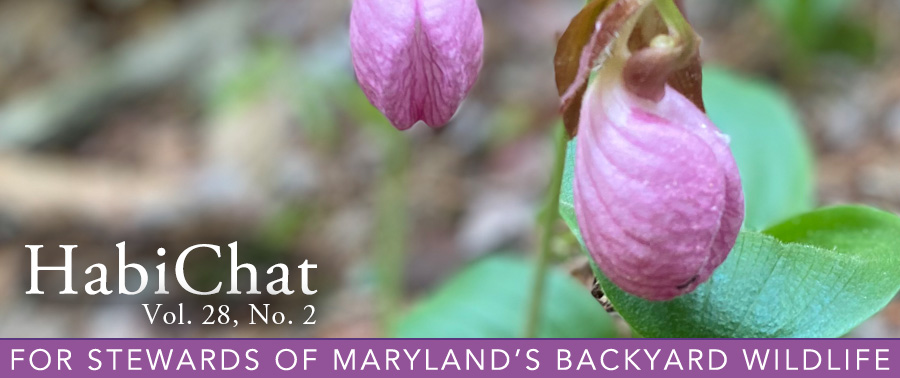Native Plant Profile: Maryland Orchids
By Sarah Witcher

Yellow-fringed orchid, photo by Mark Tegges, submitted to the Maryland DNR Photo Contest.
Orchids are a plant species that graces many of our living rooms, is gifted frequently for holidays, and is widely displayed in botanical gardens and home improvement stores. Yet, the handful of species readily available for sale pale in comparison to the many tens of thousands of types of this beautiful flowering plant growing across the globe. Family Orchidaceae is the world’s largest flowering plant family, with members in every climate, some having existed for hundreds of millions of years. Maryland is home to more than 50 species of orchid, a fact that even seasoned naturalists may be surprised to learn!

Snakemouth orchid, photo by Lisa Garrett, submitted to the Maryland DNR Photo Contest.
So, what makes an orchid special? Besides the grocery store florist varieties, commonly Phalaenopsis genus, the most well-known orchid is undoubtedly the plant responsible for vanilla in our ice creams, yogurts, and baked goods; sadly, it is not native to Maryland, Vanilla planifolia. All orchids share a feature that sets them apart from other flowering plants: the male part (or stamen) is uniquely fused with the female part (the pistil) into one structure. The petals that surround it display bilateral symmetry, or in other words, if you cut it in half top to bottom, both sides would appear to match.
Some orchids are famously epiphytic, meaning they can grow on other plants without soil, but many others are terrestrial, especially here in Maryland. Our terrestrial species share a close and often mysterious relationship with the ecosystem around them, requiring just the right combination of sun, soil chemistry, and moisture along with a precise selection of fungal neighbors (in the form of mycorrhizae) to enable their survival. They are, in fact, so tightly interwoven in their community’s life cycles that transplanting or kidnapping orchids from the wild to keep them in captivity is almost always a death sentence for the plant. A majority of our orchids are pollinated in the daytime by insects like butterflies and bees, with a few — such as the cranefly orchid — enjoying the services of nighttime pollinators. Many orchids are clever tricksters (or just not very nice!), creating scents or otherwise luring pollinators into their flowers with little to no reward for the confused bug.
They may be complicated and mysterious, but orchids are also undeniably beautiful. Some of our local species are large and showy — like the threatened large purple fringed orchid and the more common and appropriately named showy orchid. Still others are tiny (and so often overlooked) but have the most intricate flowers when they grace us with their once-annual blooms. Lady-slippers are a fan favorite, with their perfectly shoe-shaped flowers; Maryland has them in pink, yellow, and the rare white. The good news is there are a few native species that a determined gardener may be able to source (responsibly) at a nursery and keep in the right garden conditions, such as downy rattlesnake plantain and nodding ladies tresses. That said, a large proportion of the orchids native to North America are threatened or endangered — almost half by some counts. Habitat loss, climate change, the encroachment of invasive species, and public collection has taken a hard toll on this beautiful and sometimes fragile organism. As an example, the dragon’s mouth orchid was historically found in Maryland but hasn’t been documented here since 1919.
So, how can we help protect and enjoy these species for another few hundred million years? First and foremost, never collect any species of orchid from the wild or purchase from a possibly wild-collected source. If you find a rare orchid, feel free to reach out to the Maryland Department of Natural Resources Natural Heritage Program. Please do not post photos with precise location information (even in the metadata) on social media, community science applications, or other public forums. Plant native species in your garden that support the pollinators that may also visit orchids, creating that great backyard habitat that HabiChat and the Wild Acres program are all about. Finally, join us in preserving wild and rare species by remembering to check line 35 on next year’s tax return — more information is available on the Maryland DNR website.
For more information visit:
Maryland Department of Resources page on rare, threatened and endangered plants
North American Orchid Conservation Center

